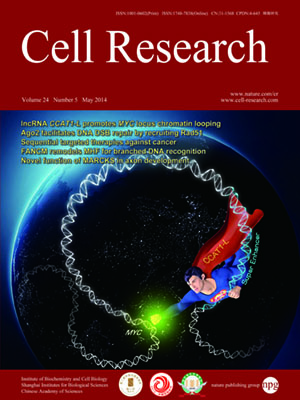
Volume 24, No 5, May 2014
ISSN: 1001-0602
EISSN: 1748-7838 2018
impact factor 17.848*
(Clarivate Analytics, 2019)
Volume 24 Issue 5, May 2014: 628-631 | Open Access
LETTERS TO THE EDITOR
Complete decoding of TAL effectors for DNA recognition
Junjiao Yang1,*, Yuan Zhang1,*, Pengfei Yuan1, Yuexin Zhou1, Changzu Cai1, Qingpeng Ren1, Dingqiao Wen1,3, Coco Chu3, Hai Qi2 and Wensheng Wei1
1State Key Laboratory of Protein and Plant Gene Research, College of Life Sciences, Peking University, Beijing 100871, China
2Tsinghua-Peking Center for Life Sciences, Laboratory of Dynamic Immunobiology, School of Medicine, Tsinghua University, Beijing 100084, China
3Current address: Department of Computer Science, Rice University, Houston, TX 77005, USA
Correspondence: Wensheng Wei, Tel: +86-10-62757227(wswei@pku.edu.cn)
The most striking feature of a transcription activator-like effector (TALE) is the presence of a central DNA-binding region composed of tandem repeats of about 34 amino acids1. Two hypervariable residues at positions 12 and 13 (repeat-variable diresidues or RVDs) in each repeat bind to DNA, and this modular DNA-binding feature of TALE repeats has inspired the development of custom-designed TALE repeats for gene editing2,3,4,5. The nucleotide recognition preference of the commonly used RVDs has been experimentally or computationally determined2,5. For instance, RVD NN has a high preference for both G and A. The rare RVDs, NK and NH, have better specificity for guanine than NN, but their affinity is relatively lower3,6,7. We thus decided to conduct a thorough investigation of potential RVDs, which cover all possible combinations of amino acid diresidues, for their DNA recognition capabilities.
10.1038/cr.2014.19
FULL TEXT | PDF
Browse 2408


